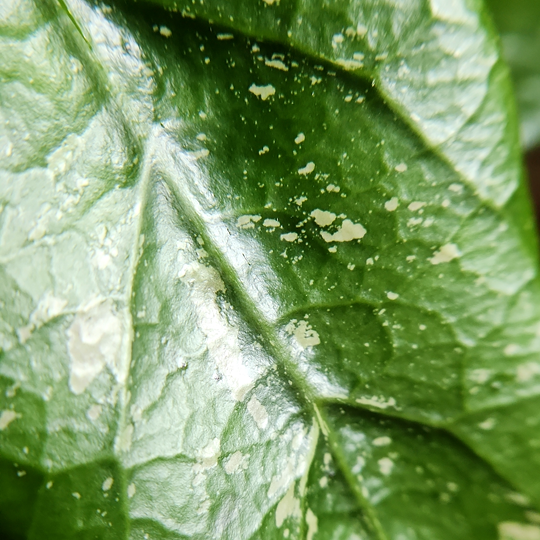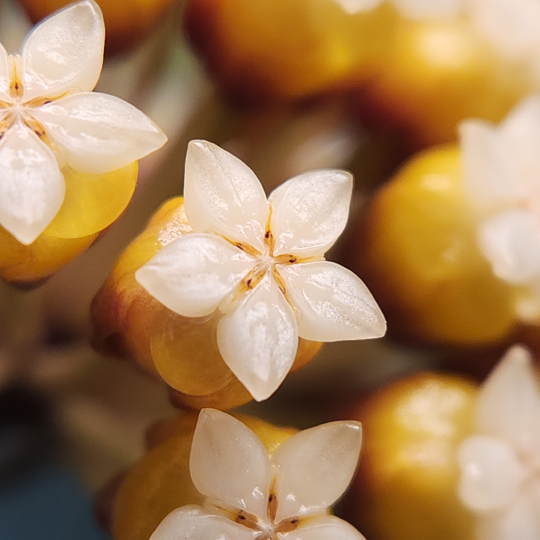If you’ve learned some of the basics of house plant care and feel as though you’re ready for something new, Hoya are some of the most interesting house plants to try next. The mystique and buzz about them can make them seem a bit intimidating to a beginner. Once you learn a bit about Hoya, where they come from and what they like, they can be rewarding additions to your collection.
Most Hoya are epiphytes, meaning that they grow on other plants and not in soil. They are native to southeast Asia – from northern Australia through Indonesia, Malaysia, Vietnam, Cambodia, Thailand, Myanmar, Bangladesh, and into India and southern China. They are typically understory plants that grow in the dappled sunlight beneath the leaf canopy.
Unfortunately, because of their current popularity, some Hoya can be expensive. If you’re new to the genus you may feel reluctant to spend money on something you haven’t tried before. With that in mind, here are five Hoya I think are great for the beginner. They’re great because they’re very easy to find, fairly inexpensive, and very tolerant of missteps.
There is a lot of information, and misinformation, available about how to grow Hoya; from what growing medium is best, to what kind of light and what kind of conditions they want. You’ll need to do your research and carefully listen to the advice offered.
Finally, about the term “splash”. There is no Hoya with the word “splash” as part of its name. For example, there is no “Hoya carnosa splash”, there is “Hoya carnosa” with splash. “Splash” refers to the irregular white speckling found on some Hoya leaves. Some plants have more, some have less, and some have none at all. Some leaves have more, some leaves have less, and some leaves have none at all, on the same plant. Don’t pay more for something labeled “splash”.
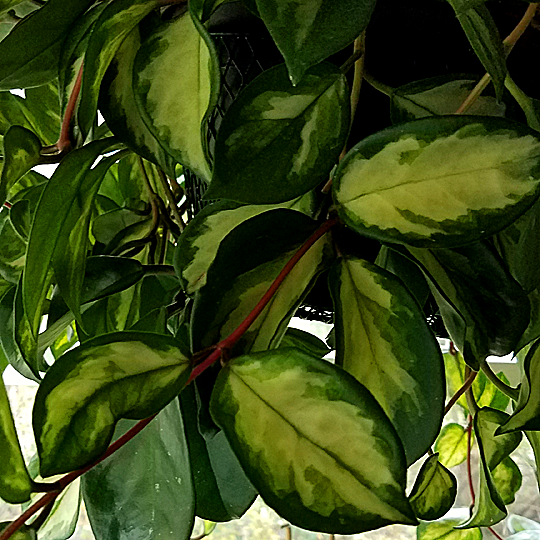
Hoya carnosa rubra ‘Krimson Princess’
Hoya carnosa (albo marginata) ‘Krimson Queen’
These two varieties of Hoya carnosa are great starter Hoya because they are so readily available. You can find them everywhere from specialty plant shops to big box stores. These two, and most other Hoya, are known by a variety of names, including Wax Plant, Porcelain Flower, and Tricolor Hoya. The beautiful variegated leaves and the pinkish stems make a striking display. Though these two varieties are sometimes confused by beginners, there is an easy way to tell them apart. Just remember this rhyme about the variegation:
The queen wears hers like a crown – (around the edge)
The princess wears hers like a gown – (in the center)
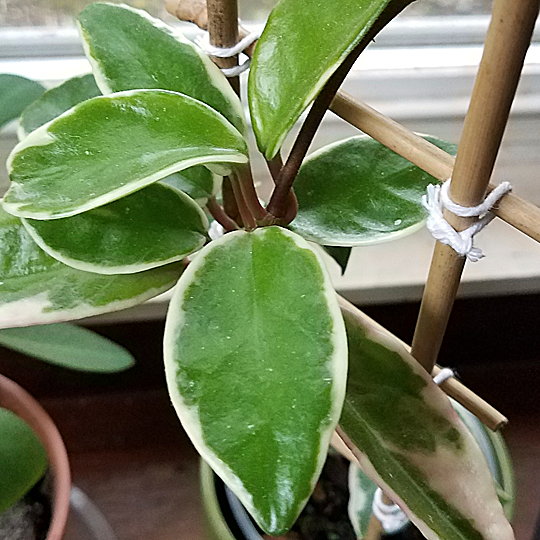
It’s very easy to propagate both of these Hoya from stem cuttings; and once your plant is started and growing you’ll be able to share cuttings with friends.
All varieties of H. carnosa thrive in bright, indirect light. They’ll be happy with a little bit of direct sun which can bring out the pink color in new leaves and stems.
As with almost all Hoyas, they want an extremely well-draining, airy mix. You can let your carnosa trail, or give it a trellis and let it climb. Just remember those vines are looking for something to grab onto, so keep an eye on them.
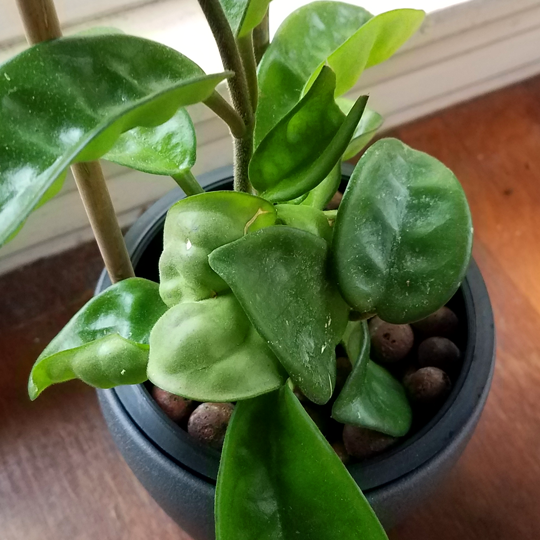
Hoya carnosa ‘Krinkle 8’
The ‘Krinkle 8’ is another variety of carnosa, and while it may not have the variegation of the Krimson Queen and Krimson Princess, its solid green leaves have a series of “krinkles” giving them a unique appearance and texture. There are supposed to be two rows of four krinkles, hence the name ‘Krinkle 8’.
Krinkle 8 are good, steady growers. They may not be the fastest growing Hoya, but they won’t disappoint.
Like most Hoya, Krinkle 8 will appreciate bright, indirect light and a well-draining, airy mix. That’s going to be a theme for almost all Hoya.
‘Krinkle 8” is typically very easy to find and reasonably priced.
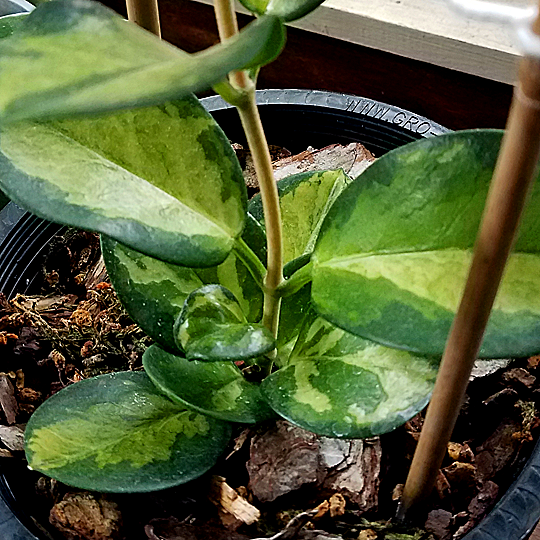
Hoya australis
You should be able to find several varieties of H. australis readily available. They may not show up in your local big box store, but your local plant store should have at least one variety in stock. The ‘Lisa’ variety is currently very popular, and more easy to find.
Some varieties have solid, green leaves, and others, like the ‘Lisa’ have beautiful variegation. Either variety is great for beginners and will reward you with steady growth.
Australis can take a bit more sun and loves to vine. You can have them trail, but they’re going to be most happy climbing. Whatever size of trellis you chose for your australis, make it larger before you plant, because once australis gets settled it’s going to take off.
Again, this plant is going to do best in a well-draining, very airy mix.
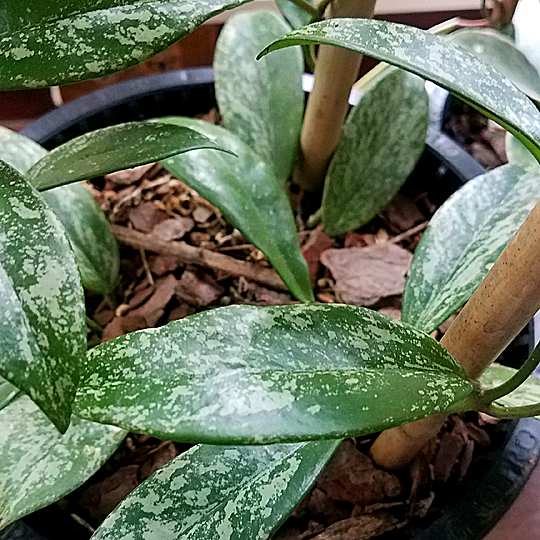
Hoya pubicalyx
You can find H. pubicalyx almost anywhere, from hardware stores to grocery stores. There are a number of varieties of pubicalyx, including ‘Silver Pink’, ‘Royal Hawaiian Purple’, and ‘Red Buttons’, but they all share similar characteristics. The long leaves can carry either a little or a lot of splash and can get rather large.
Like most of the other Hoya on this list, H. pubicalyx can’t wait to get growing. Let it vine or give it a trellis, it’ll be happy with either. It, too, wants well-draining, airy soil and bright indirect sunlight. If it gets a bit of direct sunshine it’ll be happy with that.
H. pubicalyx is also easy to propagate, so once yours gets going, you be able to take cuttings to make a fuller plant or to share with friends.
Many Hoya typically send out a long vine without any leaves, so if and when you see those on your plant, it’s normal. Don’t assume that something is wrong, and don’t cut them off. Those vines are looking for something to grab onto. When it finds a support it’ll start pushing out new leaves.
There you have it – 5 Great Beginner Hoya.
